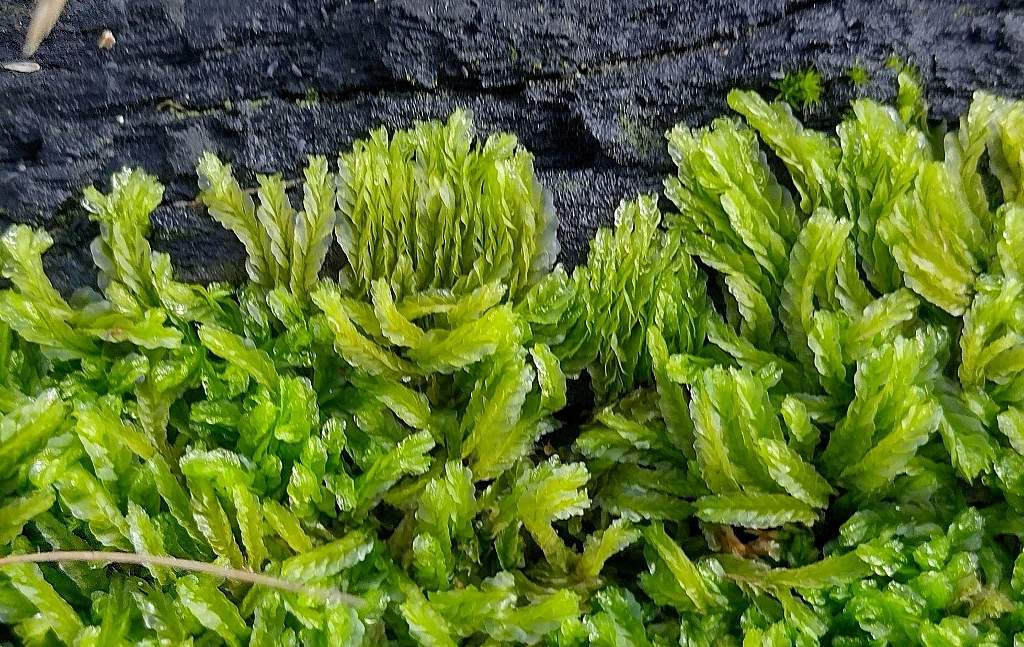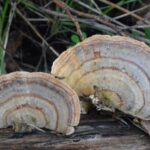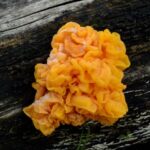Our August walk took us further afield than usual, to Black Hill Reserve near Kyneton. Lionel Jenkins and Barb Guerin lead a dozen other walkers on a loop of just over 5km. The dominant tree species are Manna Gum, Messmate Stringybark and Yellow Box with an understorey of Silver, Black and Lightwood Wattles. In the ground layer we saw Prickly Starwort, Spiny-headed Mat-rush, two specimens of the threatened species Arching Flax-lily, and some ferns ringing the boulders. A lightning strike in January 2015 caused a bushfire that went through 80 percent of the reserve, and it is still recovering.

A liverwort (Chiloscyphus species) on burnt log, by Bernard Slattery
From the 1960s to the turn of the century efforts at revegetation after gravel extraction and bushfires saw the introduction of non local native species (e.g. Sallow Wattle) but in more recent years any plantings done are of local native species in accordance with the three Ecological Vegetation Classes found within the reserve.
Huge, coarse-grained granite boulders are a feature of the walk, some monolithic in size. We enjoyed morning tea in some “caves” (shelters really), and lunch on a grassy slope in the sun. Mosses were in abundance, and Joy Clusker pointed out and photographed for us several species of fungi, and gum exuding from Black Wattles:
- Cannonball or Artillery Fungus (Sphaerobolus stellatus)
- Turkey Tail Fungus (Trametes versicolor)
- Golden Jelly Bells (Heterotextus peziziformis)
- Magenta Rustgill Fungus (Gymnopilus dilepis)
- Yellow Brain or Witch’s Butter (Tremella mesenterica)
- Gum exuding from Black Wattle (Acacia mearnsii)
‘Twas a very enjoyable walk on a beautiful Winter’s day. Thanks to Lionel and Barb ad the walkers who contributed photographs for this report. There were not many flowers to be seen – a little bit of Common Hovea and Purple Coral-pea. It would be good to re-visit in Springtime when the orchids and other wildflowers are out (as featured on the beautiful interpretive signs in the rotunda near the main entrance to the reserve).
- by Frances Cincotta
- by Christine Henderson
- by Bronwyn Silver













 Click on image for info/order page
Click on image for info/order page Click on image for info/order page
Click on image for info/order page Click on image for info/order page
Click on image for info/order page




















